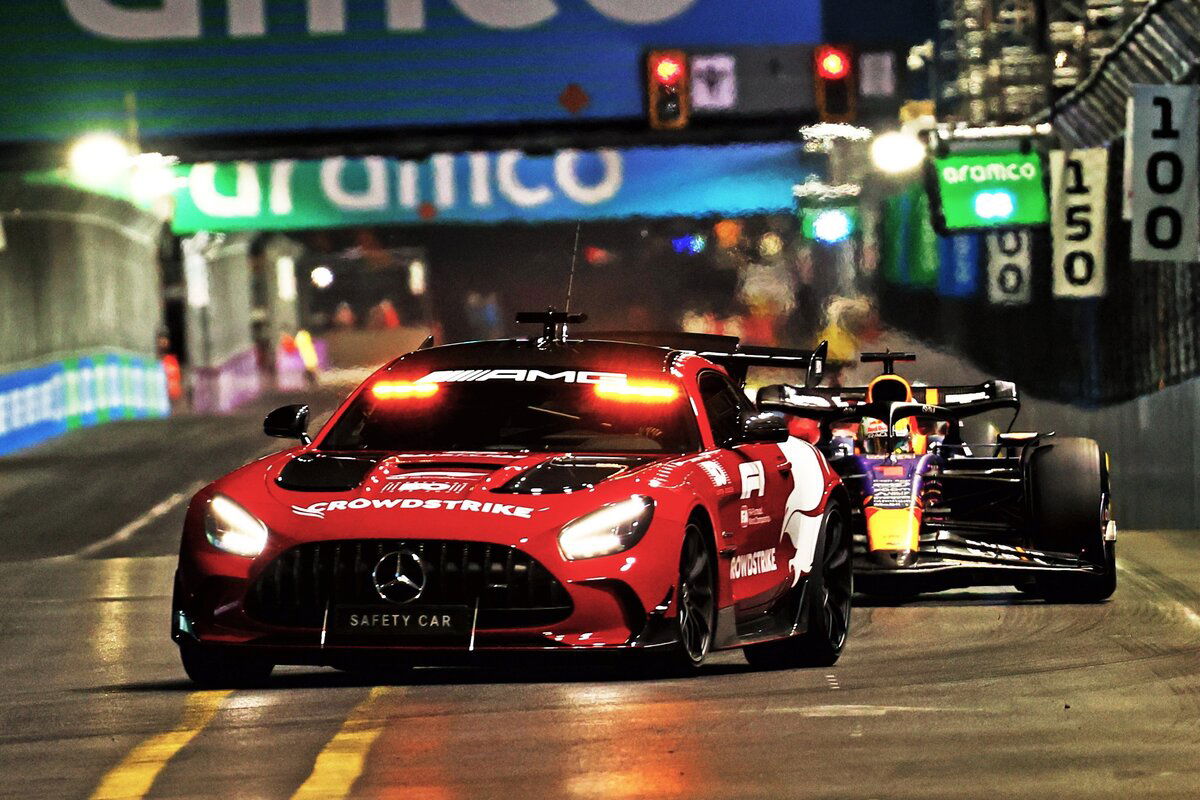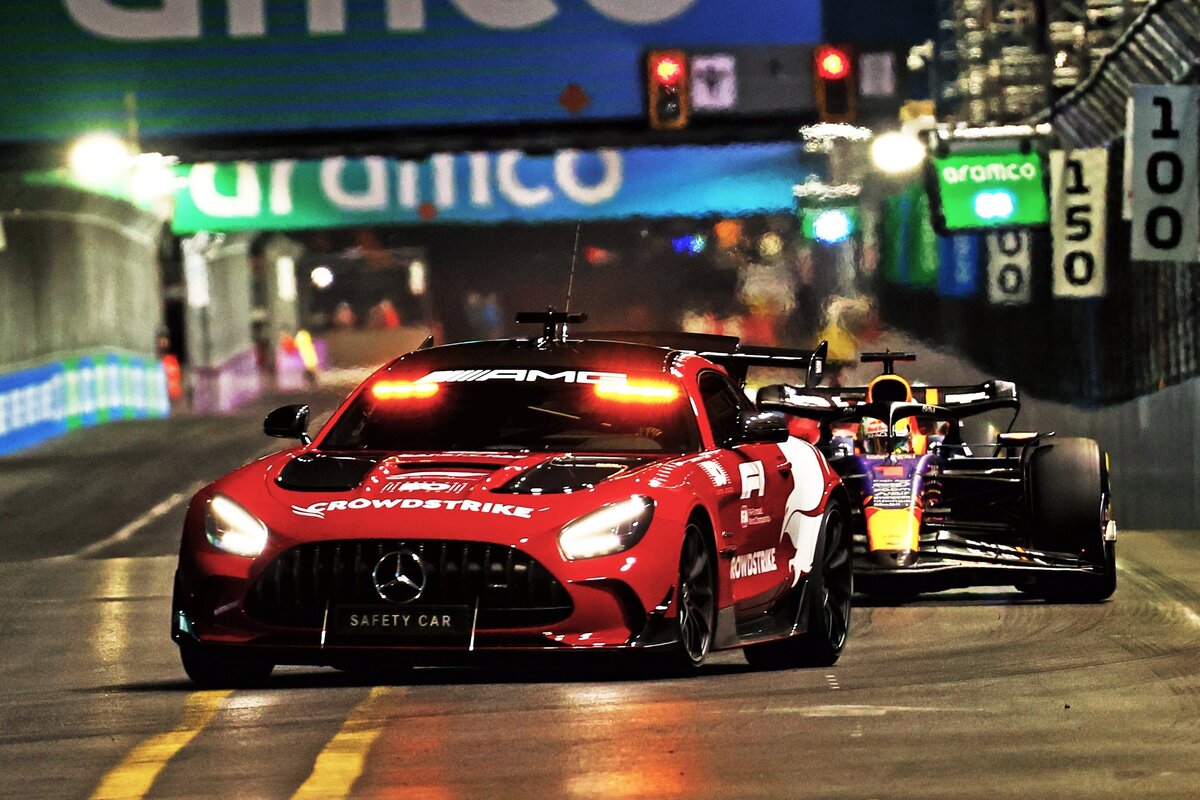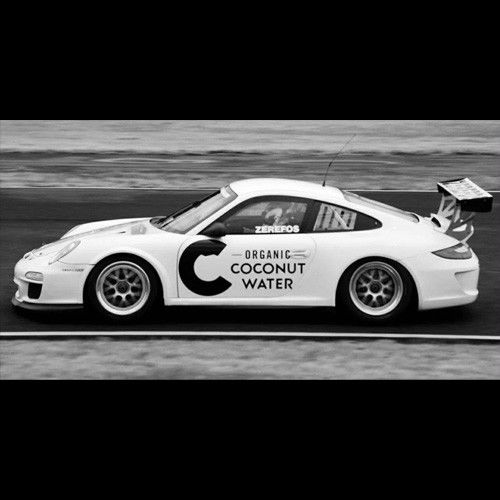

Carlos Sainz has suggested F1 needs to find a faster Safety Car as drivers struggled for tyre temperature behind it in Las Vegas.
F1 currently employs two different solutions for its Safety Car, alternating the use of a track-spec Mercedes-AMG GT Black Series and a modified Aston Martin Vantage.
The car is driven by veteran racer Bernd Maylaner, who has performed the role since 2000.
While both cars are high-performance road machines, they are no match for an F1 car, with driers often asking for it to drive faster.
That was again the case in Vegas as cool ambient temperatures saw drivers struggle for grip on the all-new circuit.
“Turn 1 on the Safety Car restart was like driving on ice,” Sainz observed.
“We need to find a solution, I think, to make the Safety Car a bit quicker in these certain scenarios.
“I cannot explain to you guys how it feels to go 340 and knowing that when you’re going to hit the brake that thing is not going to stop.”
The Safety Car is already fettled from its factory form with the paraphernalia needed to head the F1 field; lights, radios, on-board cameras, and so on.
Of the two cars in use, the Mercedes is the more powerful, with over 200bhp more grunt than the Aston Martin.
It’s also lighter, which enables it to accelerate from 0-60 in 3.2 seconds, 0.3s faster than the Vantage, and produces about 100kg more downforce at 200km/h.
The Aston Martin has been modified to boost its performance, with front splitter and other tweaks giving it an extra 60kg of downforce over the production model.
Changes have also been made to the suspension, steering and dampers, and other work to stiffen its structure.
However, outright speed is not the priority for the FIA, whose focus is on the car’s ability to neutralise the race from a safety standpoint.
It requires the Safety Car be on standby throughout the race, which necessitates it sitting in pit lane with its engine running, ready to head out at a moment’s notice.
That mandates a car that can be kept cool enough while stationary in the hot climates F1 visits, while also having a suitably large fuel tank to run for long periods at high speed.
Both of those points are mutually exclusive to ultra-high performance but are essential when it comes to the requirements of a Safety Car in Formula 1.
When in use on track, Maylander may not been pushing the Safety Car to its limit anyway but instead managing the speed of the pack to allow for the efficient recovery of any incident.
The FIA’s needs are therefore at odds with those of the drivers, who often struggle to maintain tyre temperature when under the control of the Safety Car.
For them, tyre temperature is key for safety as not only does it influence ride height but goes, at least somewhat, hand-in-hand with brake temperatures.
Low tyre temperature leads to low tyre pressure and, therefore, low right height, increased bottoming, and an increased chance of a crash like experienced by Lando Norris shortly after a Virtual Safety Car restart in Vegas.





















Discussion about this post